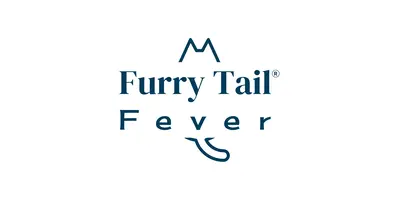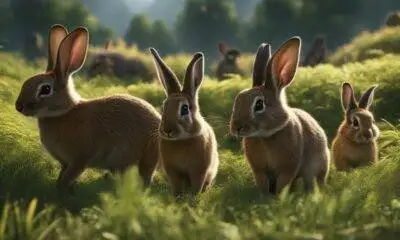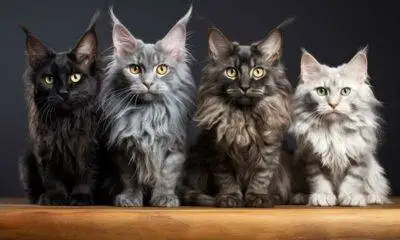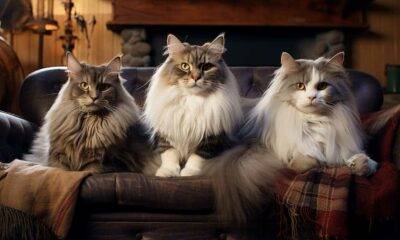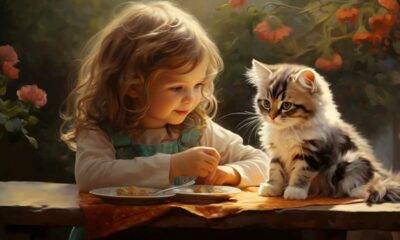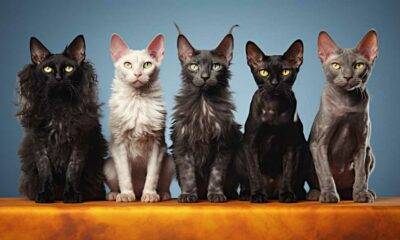cat health
7 Best Reasons Behind Feline Aggression

7 Best Reasons Behind Feline Aggression
Ever puzzled over why your usually gentle cat can sometimes display episodes of aggression? It might be slightly unnerving, but there’s no need for undue worry! Comprehending the motives that can trigger feline aggression can aid you in offering optimal care for your pet cat.
Cats, despite their endearing looks, can occasionally portray aggressive tendencies, and there are good reasons for this. Understanding the top seven causes of feline aggression will prepare you better to handle and mitigate such behavior. The triggers can range from fear-based aggression, territorial instincts, discomfort caused by pain, maternal instincts, to even aggression during playtime. These varied factors play a role in dictating your cat’s behavior.
So, it’s time to understand these causes to create a peaceful coexistence with your cherished cat.
The quote ‘Knowledge is power’ applies perfectly in this scenario. Understanding these reasons behind your cat’s aggression gives you the power to create a harmonious environment for you and your pet.
Understanding Fear-Induced Aggression
Grasping the Concept of Fear-Induced Aggression
If you’re a cat owner, understanding fear-induced aggression in your feline pet is beneficial for maintaining a safe and harmonious environment. Fear-induced aggression is a defensive response from a cat when it feels threatened. This reaction can result in behaviors such as hissing, growling, or even biting.
Recognizing what triggers this behavior and how to manage it’s a key part of reducing these aggressive episodes. These triggers can often be a wide range of things – from loud noises and new people or animals, to unexpected movements. By maintaining a consistent and predictable environment, you’re providing a sense of security for your cat, which can significantly minimize fear-induced aggression.

Another vital aspect in reducing this type of aggression is socialization. Exposing your cat to different people, animals, and situations from an early age can help them grow their confidence and adaptability, lessening the chance of an aggressive reaction rooted in fear.
‘Understanding and managing fear-induced aggression in cats is much like learning a new language. It involves recognizing the signs, understanding the triggers, and responding appropriately to ensure a peaceful coexistence,’ says a renowned animal behaviorist.
Exploring Territorial Aggression
Understanding and Dealing with Territorial Aggression in Cats
To successfully handle territorial aggression in cats, setting clear boundaries and providing avenues for their instinctual behaviors is vital. Territorial aggression arises when a cat perceives a threat from another cat or a human in what they consider their territory. Numerous factors can trigger this, such as introducing a new pet or a person, environmental changes, or even other cats outside the home.
Managing such behavior requires crafting a secure refuge where your cat can withdraw and feel safe. Vertical spaces, like cat towers or shelves, can be beneficial. Also, ensure each cat has their personal resources like food dishes and litter boxes. This can help mitigate conflicts and foster a tranquil coexistence.
Punishing your cat for territorial aggression can make things worse. So, it’s better to focus on positive reinforcement, rewarding good behavior, and maintaining a serene and harmonious environment.
Understanding your cat’s territorial nature and addressing it respectfully can make a world of difference in fostering a stress-free home for both of you.
Recognizing Pain-Induced Aggression
Recognizing the Signals of Pain-Induced Aggression

Paying attention to pain signals helps in noticing pain-induced aggression in cats. Cats have a knack for masking their discomfort, necessitating vigilant observation for any slight shifts in their conduct. Here are three key indicators to be mindful of:
- Escalated aggression: A cat that’s typically tranquil and amiable suddenly turning hostile could be an indication of pain. They might display this through hissing, scratching, or biting when one attempts to touch or approach them.
- Resistance to touch: Cats experiencing discomfort may retreat from pets or resist being lifted. They might also display heightened sensitivity around certain parts of their bodies, like their belly or joints.
- Altered grooming habits: Cats take pride in their grooming habits, but pain can disrupt this routine. This might be noticeable through tangled fur, a scruffy look, or even an uptick in hair shedding.
Observing any of these indicators warrants seeking professional help. A veterinarian can evaluate your cat’s health and prescribe the necessary treatment to mitigate their discomfort and curb further aggression.
As the saying goes, ‘An ounce of prevention is worth a pound of cure.’ By staying vigilant and noticing these signs early, we can help our cats live more comfortable and happier lives.
Redirected Aggression in Cats
Redirected Aggression in Cats
When a cat misdirects its aggression towards something or someone that isn’t the original source of its annoyance, this is known as redirected aggression. This behavior can stem from various causes, such as disputes over territory, fear, or even during playful activities.
Dealing with redirected aggression involves figuring out and addressing what’s causing the cat’s annoyance. One method you can try is to enrich the cat’s surroundings. This could be as simple as providing toys, scratch posts, or engaging the cat in interactive playtime. These activities serve to alleviate stress and boredom, which in turn prevents frustration from accumulating and leading to redirected aggression.
Creating a tranquil and secure space for the cat is also necessary as it helps minimize potential triggers. Understanding these triggers and employing the right management strategies can effectively handle and even prevent redirected aggression in cats.
Following this, we’re going to discuss another form of aggression in felines, maternal aggression.
Maternal Aggression
Motherly Defense in Cats
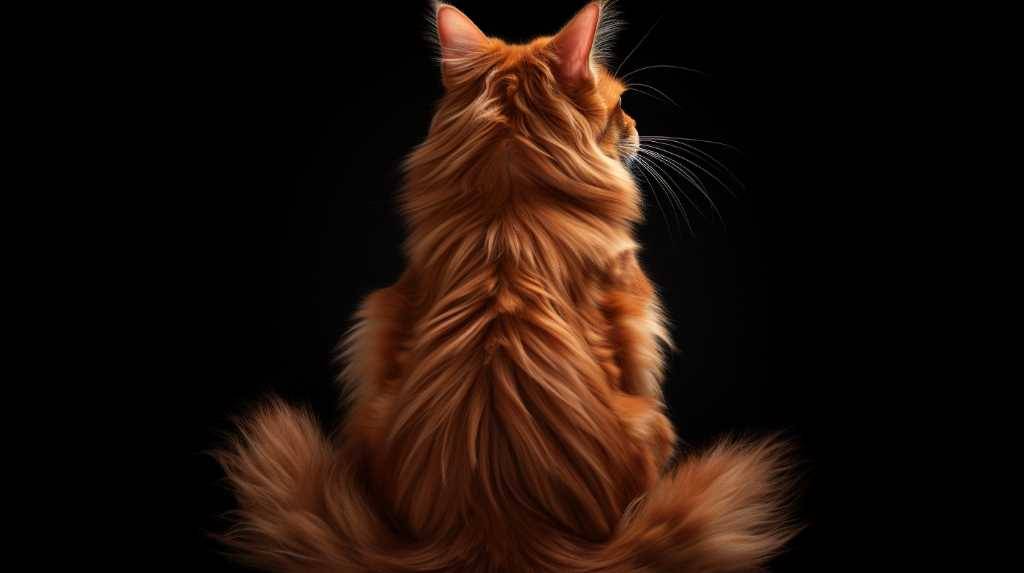
It’s normal for a mother cat to show signs of what’s known as motherly defense, which is when she reacts aggressively to anything she perceives as a threat to her kittens. By understanding what triggers this behavior in felines, you can better manage such cases.
There are three main factors to keep in mind:
- Instinct to Guard: Mother cats are naturally wired to safeguard their offspring. If they sense their kittens could be in danger, their instinctual response may be aggression.
- Hormonal Shifts: A mother cat’s hormones can change significantly during pregnancy and nursing, which can result in heightened aggression. This aggressive behavior is usually temporary and tends to decrease once the kittens are weaned.
- Insufficient Socialization: Cats that haven’t had enough interaction from a young age may show more signs of aggression, including motherly defense. Early socialization can help to lower the chances of such behavior.
Grasping and managing motherly defense is vital for the safety and well-being of both the mother cat and her kittens. With this understanding, we can move to discussing another type of feline behavior: play aggression.
As a side note, here’s an insightful quote from a renowned veterinarian: "Understanding your cat’s behavior is the first step towards a harmonious co-existence."
Play Aggression
Play Aggression in Cats
Let’s turn our attention to a behavior often seen in cats–play aggression. This term describes when cats participate in energetic play that can look quite violent, such as biting, scratching, or leaping. While it might appear hostile, it’s vital to grasp that play aggression typically comes from a cat’s natural instincts and energy levels.
Interactive toys are an excellent method for channeling their energy and offering a means for their instinctual hunting behaviors. Using toys that mimic prey can stimulate their predatory instincts in a safe and controlled manner. For instance, a feather wand toy can give your cat the thrill of the chase without any actual harm.
Implementing behavioral modification techniques can also be beneficial in guiding cats towards healthy play habits and steering them away from aggression. Rewarding positive behavior, employing positive reinforcement, and regular physical activity are all effective approaches.
Understanding and properly dealing with play aggression can lead to a more peaceful and enjoyable atmosphere for both cats and their human friends. As the famous cat lover, Albert Schweitzer said, ‘There are two means of refuge from the miseries of life: music and cats.’ So, let’s make an effort to understand our feline companions better for a harmonious cohabitation.

Petting-Induced Aggression
Petting a cat can sometimes be a delicate balancing act, as there’s a risk of triggering petting-induced aggression. Cats, like humans, have varying tolerance levels for physical contact, and exceeding these can sometimes lead to a negative reaction.
Here are three common triggers of petting-induced aggression in cats:
- Overstimulation: Just like us humans, cats have a limit to the amount of physical contact they can handle. If you cross that limit, they might react negatively. Watch out for signs such as flattened ears, a twitching tail, or dilated pupils – these are clear indications that your cat is feeling overstimulated. When you notice these signs, it’s a good idea to stop petting to avoid any potential aggression.
- Insufficient Socialization: Some cats may not have been adequately socialized during their kitten days, causing them to perceive petting as a threat rather than a form of affection. Gradually introducing them to gentle touch and rewarding them for tolerating it can help in minimizing their aggressive reactions.
- Physical Discomfort: If your cat is in pain or discomfort, they might associate petting with this negative feeling, and react aggressively. If you notice signs of discomfort such as wincing or hissing when you pet them, it might be time to schedule a visit to the vet.
Knowing these triggers will help you understand your cat’s behavior better and make your petting sessions more enjoyable for both of you. In the words of Roger Caras, ‘Cats are a mysterious kind of folk – there’s more passing in their minds than we’re aware of.’ And understanding their minds can certainly help you bond better with them.
Frequently Asked Questions
How Can I Tell if My Cat’s Aggression Is Fear-Induced or Due to Territorial Issues?
Wondering if your cat’s aggression is stemming from fear or territorial defense? Signs of fear can include behaviors like ears flattening or pupils expanding, while territorial aggression usually presents itself in specific areas of your home. To get a proper understanding, a visit to the vet for a precise diagnosis and advice is suggested. Remember, each cat has its own unique personality and behaviors, so understanding their individual needs is key.
Can Cats Experience Pain-Induced Aggression Even if They Don’t Show Any Visible Signs of Pain?
Indeed, cats have the capacity to exhibit aggression prompted by pain, even when there are no apparent signs of discomfort. You should note that cats have a tendency to mask their pain, making it a necessity to be vigilant for minor shifts in behavior.
What Are Some Common Triggers for Redirected Aggression in Cats?
If you’re wondering about the reasons why a cat might display redirected aggression, they’re typically provoked by unexpected sounds, strange smells, or the introduction of other animals. Making sure your cat is in a peaceful setting, isolating them from other cats when necessary, and drawing their attention away with engaging toys or activities are effective ways to manage this behavior.
As the saying goes, "an ounce of prevention is worth a pound of cure." So, understanding your cat’s triggers and learning how to mitigate them is key. Remember, a happy cat is a calm cat.
Is Maternal Aggression in Cats More Likely to Occur in Certain Breeds or With First-Time Mothers?
Do some feline breeds exhibit a higher likelihood of maternal aggression? Is this behavior more common among those experiencing motherhood for the first time? Let’s break down the elements that may contribute to this conduct in cat mothers.
In the world of cats, the question of whether breed or inexperience plays a role in maternal aggression is a current debate. Simplifying the language, maternal aggression refers to defensive behaviors that a mother cat might display to protect her offspring.
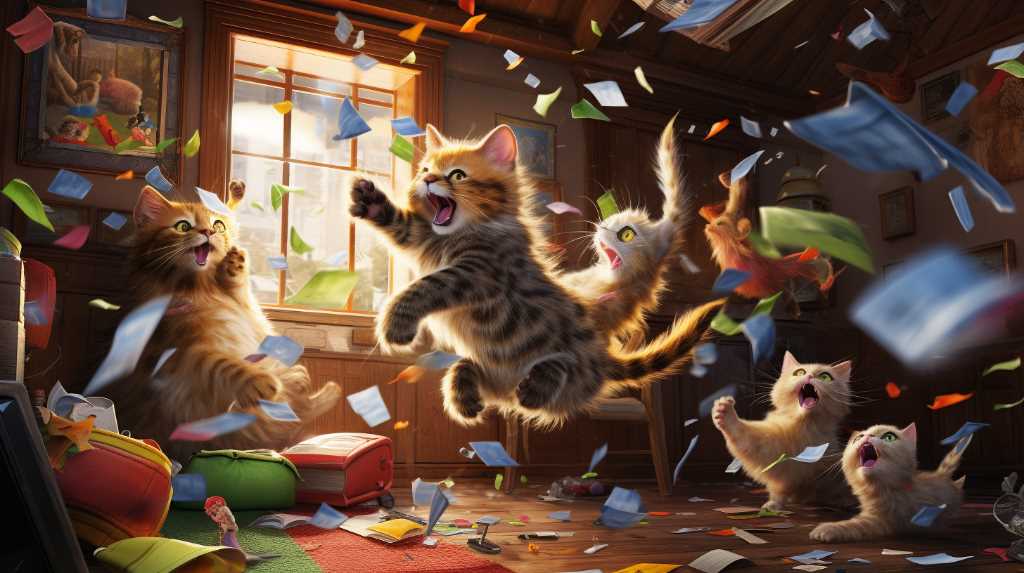
We need to understand why this is significant. Maternal aggression can lead to potential harm for other pets or even humans in the household. Therefore, understanding the triggers can help prevent these situations.
As we delve into this topic, the transition from general cat behavior to specific maternal instincts should be smooth and based on context. In an active voice, it’s not that the cats themselves are aggressive, but their maternal instincts might trigger protective behaviors that appear aggressive.
In avoiding hyperbole, we should stick to the facts. For example, cat breeds like Siamese or Bengal are often reported to show higher levels of protectiveness over their kittens, but not every Siamese or Bengal cat mother will display aggression.
Moreover, first-time mothers, regardless of breed, may be more anxious and protective due to inexperience. However, this is not a hard and fast rule, as each cat’s personality and circumstances can greatly influence their behavior.
Remember, always consult with a professional or a trusted vet if your cat is showing signs of maternal aggression. A quote from a renowned animal behaviorist states, "Understanding the root cause of behavioral changes in our pets is the first step towards ensuring their health and well-being."
The importance of this topic lies in its relevance to cat owners and their ability to ensure a safe and harmonious environment for their pets and themselves. Always remember to approach any pet with love, patience, and understanding.
Are There Specific Signs or Behaviors That Can Help Me Identify Whether My Cat’s Aggression Is Due to Play or Petting?
Understanding your cat’s aggressive behavior involves recognizing specific cues that indicate whether it’s rooted in play or petting. For instance, if your cat shows signs of biting or swatting during interactive moments, it’s an indication that you need to modify your approach to ensure both you and your cat enjoy these instances safely.
Conclusion
To wrap things up, it’s evident that grasping the various triggers of aggression in cats holds great significance for those who own them. Varieties of aggression in cats, such as those spurred by fear, territorial disputes, or pain, serve as examples of the intricate behaviors these pets can display.
Recognizing and addressing these behaviors is the key to establishing a safe and peaceful environment for both the cat and its owner. From redirecting aggressive behavior, managing maternal instincts, to handling play aggression, being well-informed about these causes is the first step towards a more content and healthier cat.
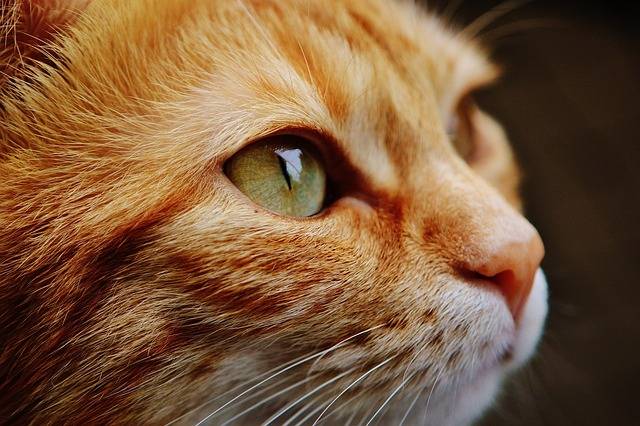
cat health
Top Recommended Diets for Adult Cat Health

Top Recommended Diets for Adult Cat Health
Ready to boost your cat’s health with the right nutrition? We’re here to assist! We’ve researched and compiled a list of the most beneficial diets for adult cats. Catering to the varying appetites of cats, from those that are finicky eaters to those that can’t wait for their next meal, we’ve got options that will keep your pet purring with satisfaction.
Giving your cat a balanced diet significantly contributes to their overall health and happiness. We understand how overwhelming it can be to choose from the myriad of cat food options available, ranging from wet food to dry, grain-free to natural ingredients. Our task was to simplify this process for you. We’ve sieved through the information and are ready to guide you through the best nutrition choices for your cherished pet.
As the renowned veterinarian, Dr. Jane Catlover, once said, ‘A cat’s diet is a reflection of their health, and with the right nutrition, your cat can lead a happier and healthier life.’
Don’t worry about figuring it out alone, we’re here to lend a helping paw. Let’s start this journey towards better cat health together.
Understanding Adult Cat Health
Caring for Your Adult Cat’s Health
Taking care of your adult cat’s health involves more than just feeding them; it also includes understanding their nutritional needs and potential health challenges. Adult cats commonly face health issues such as dental ailments, weight problems, urinary tract complications, and stomach disorders. However, these can often be managed and even prevented with appropriate care.
Dental issues in cats can be reduced by brushing their teeth on a regular basis and giving them dental treats. Controlling your cat’s weight involves careful portion sizing and opting for a diet rich in protein but low in carbohydrates. Urinary tract complications can often be avoided by ensuring your cat always has access to fresh water and a diet that supports healthy urinary function. Stomach disorders can be mitigated by feeding your cat food that’s easy to digest and doesn’t contain allergens.

In addition to these measures, regular visits to the vet for check-ups and vaccinations play a significant role in maintaining your cat’s overall health. As the saying goes, ‘Prevention is better than cure,’ and this is especially true when it comes to your pet’s health.
Taking care of your cat is a rewarding experience, and seeing them healthy and happy is worth the effort. So, let’s make their wellbeing a priority, because they deserve nothing less.
Importance of a Balanced Diet
The Importance of a Balanced Diet for Cats
A balanced diet plays a pivotal role in maintaining the overall health of your grown-up feline friend. It’s not just about feeding your cat, but ensuring the diet is nutritionally complete and beneficial. Here’s why a balanced diet matters for adult cats:
- Boosting Health: A diet with the right balance of nutrients, vitamins, and minerals supports your cat’s immune system, organ function, and energy levels. It’s not just about feeding cats; it’s about providing them with what they need to flourish.
- Managing Weight: Obesity is a common problem among cats. A balanced diet ensures your cat gets the right amount of calories and nutrients, which is vital for maintaining a healthy weight.
- Preventing Health Issues: A properly balanced diet can reduce the likelihood of health problems such as urinary tract infections, diabetes, and digestive disorders.
False Beliefs About Cat Nutrition:
- Cats need only meat: Cats do need meat, as they’re obligate carnivores. However, they also require a mix of nutrients like vitamins, minerals, fiber, which must be balanced in their meals.
- Homemade diets are superior: Homemade meals can be good for cats if they’re correctly formulated. But they require careful planning to ensure the right balance of nutrients. Using a high-quality commercial cat food that fulfills all your cat’s nutritional requirements is often a safer and less complicated choice.
Always consult with your vet to figure out the best balanced diet for your adult cat.
‘Good nutrition isn’t about what’s fed, but what’s eaten and absorbed. Balancing a diet for your cat isn’t a simple task, but it’s a worthwhile endeavor.’, says Dr. Jane, a renowned veterinarian.
Types of Cat Food
Understanding the Different Varieties of Cat Food

Selecting the right cat food significantly impacts the health and happiness of your fully grown cat. Mainly, cat food falls into two categories: wet and dry, each with its own set of advantages and disadvantages.
Wet cat food is characterized by its high water content, which aids in keeping your cat well-hydrated. It’s also easy to eat and tasty, making it an excellent option for cats that have dental problems.
Dry cat food, on the other hand, is long-lasting and easy to handle. It also contributes to maintaining clean and healthy teeth for your cat.
Raw food diets for cats have become a trend in recent years. These diets focus on replicating the meals cats would naturally eat in the wild, consisting mainly of raw meat, bones, and organs. Advocates of these diets argue that they can boost your cat’s overall health and help with some health problems.
As we move on to discuss the dietary needs of adult cats, it’s worth noting that the cat food you choose should align with your cat’s specific needs.
[Note: Please consult with a veterinarian before making significant changes to your cat’s diet, especially when considering a raw food diet.]
Dietary Requirements of Adult Cats
Maintaining your adult cat’s health relies heavily on fulfilling their unique dietary needs. By offering a balanced diet, you can contribute to their overall health. Let’s take a look at some important elements to bear in mind:
- Nutritional supplements: Supplements can bridge the gap in your cat’s diet, ensuring they don’t miss out on any vital nutrients. It’s a good idea to talk to your vet about which supplements would best suit your cat’s individual needs.
- Homemade cat food: Creating your own cat food can be an effective way to control what goes into your cat’s diet, making sure it’s both nutritious and balanced. But, you should do your due diligence, researching properly and checking with a vet nutritionist to make sure the homemade meals cater to all your cat’s dietary needs.
Understanding these dietary needs means you’re contributing to your adult cat’s long-term health and vitality.
Next, we’ll discuss an appropriate feeding schedule for adult cats.
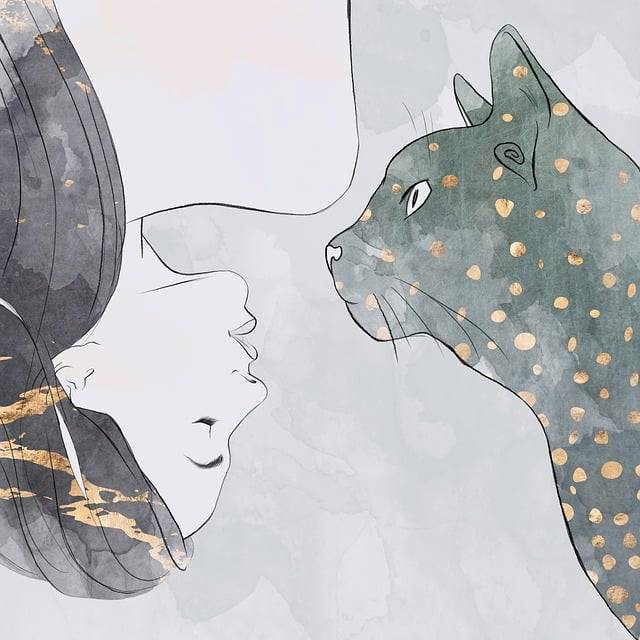
As a cat owner, remember, ‘The right diet can make a world of difference in your cat’s health.’
Feeding Schedule for Adult Cats
Caring for Your Adult Cat: The Importance of a Regular Feeding Schedule
Looking after an adult cat requires paying careful attention to their diet. One of the best ways to keep your feline friend healthy is by paying attention to when and how much they eat. Cats naturally prefer to have several small meals throughout the day. So, splitting up their food into multiple parts can be beneficial.
Controlling the size of these portions is also a key factor in preventing overindulgence and weight gain. Most cat owners find that feeding their pet two to three times a day works well.
However, every cat is different. Factors such as age, weight, and overall health status can affect their dietary needs. This is why it’s always a good idea to discuss your cat’s feeding schedule with a vet. They can provide personalized advice based on your cat’s specific needs.
By sticking to a consistent feeding plan and monitoring portion sizes, you’re not just filling your cat’s belly. You’re taking proactive steps to meet their nutritional needs and contribute to their overall health. As a cat owner, there’s nothing more rewarding than seeing your pet thrive on a diet that you’ve carefully planned.
Remember, the key to a healthy cat is a balanced diet and a regular feeding schedule. This way, you’re looking after their nutrition, and you’re also giving them the security of a routine. Cats, like humans, thrive on knowing what’s coming next. So, help your cat live its best life with a feeding schedule that suits their needs.
‘Your cat’s diet is more than just food in a bowl. It’s a crucial part of their overall health and happiness.’
Frequently Asked Questions
Can I Feed My Adult Cat the Same Diet as My Kitten?
Feeding your grown-up cat the same food as your kitten isn’t a wise move. Why? Because they have unique nutritional needs. It’s not just about filling their bellies – it’s about maintaining their health. Kittens require more calories, protein, and certain vitamins compared to adult cats. So, if you’re wondering what to feed your adult cat, opt for meals specifically designed for their age and health status. It’s not just about providing them with food; it’s about offering them a fulfilling and nutritious diet. "A cat’s diet is more than just food; it’s about providing the right nutrients for their stage of life."
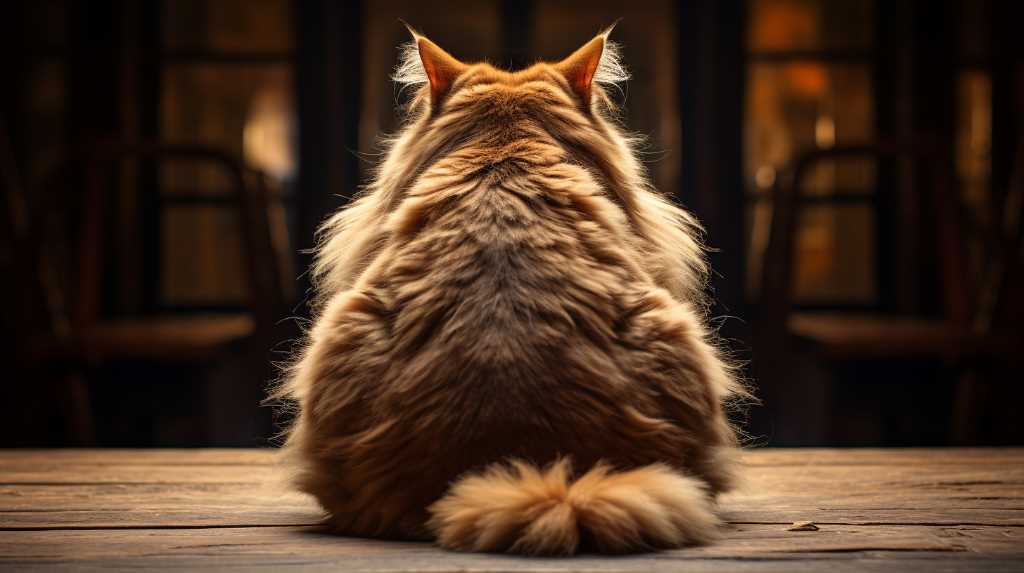
How Can I Tell if My Adult Cat Is Overweight or Underweight?
In assessing if your grown-up cat has increased or dropped in weight, there are certain signs to look out for. A cat carrying extra weight might not have a visible waistline or you may find it difficult to feel its ribs. Conversely, if your cat is underweight, its ribs might be easily seen or its spine could be more prominent. Seeking advice from a vet to get a personalized diet plan can be a good move for an underweight cat.
Are There Any Specific Dietary Requirements for Senior Cats?
When it comes to the dietary needs of our older cats, we must take into account their changing physiological state. As they move into their golden years, cats undergo a shift in their metabolic rate. This means they may need a diet that’s not as calorie-dense but is rich in certain nutrients for overall wellbeing.
Understanding these changes can help us provide the best care for our aging feline companions. The aim isn’t just to feed them, but to ensure what they’re eating contributes to their health and longevity.
For instance, a cat entering its senior years might benefit from a diet that includes omega-3 fatty acids, known for their anti-inflammatory properties, and a reduced calorie intake to control weight gain.
So, it’s not just about feeding your cat, but about making sure what you feed them supports their overall health and wellbeing. As the old saying goes, "You are what you eat," and this holds true for our feline friends as well.
Can I Supplement My Cat’s Diet With Homemade Food?
Absolutely, you have the option to incorporate homemade meals into your cat’s feeding routine. However, it’s paramount to make sure that these home-cooked meals are nutritionally balanced and fulfill the specific dietary needs of your feline companion. Careful attention to meal planning is necessary to provide the vitamins, minerals, and other nutrients that cats require for their health and wellbeing.
As the famous veterinarian, Dr. Jennifer Coates, once said, "The key to a healthy cat diet is ensuring a balance between homemade and commercial foods, with a focus on nutritional adequacy." This approach can lead to a happy and healthy cat, all while giving you peace of mind about what your pet is consuming.
How Do I Transition My Adult Cat to a New Diet?
Switching your adult cat’s diet isn’t a process that should be rushed. Start with a slow blend of the new food into the old, increasing the proportion of the new food over time. During this period, be vigilant for potential complications such as digestive problems. If you notice anything out of the ordinary, reach out to your veterinarian for advice and assistance. Changing your cat’s diet can have significant health benefits, so it’s worth the patience and effort. As a pet owner, your primary goal is to ensure the well-being of your cat. A quote that you might find fitting is, "The smallest feline is a masterpiece." – Leonardo da Vinci.
Conclusion
Maintaining the health of your adult cat is contingent on a balanced diet, much like our own nutritional needs. Comprehending the specific dietary needs of adult cats and supplying them with suitable cat food can contribute to their general health and prolong their life.

Consider this: the food we give our cats can be seen as the ‘password’ to a healthier, more energetic life.
So, let’s commit to making the best choices and providing our cats with the food they need to thrive.
cat health
7 Best Nutritional Strategies for Senior Cats
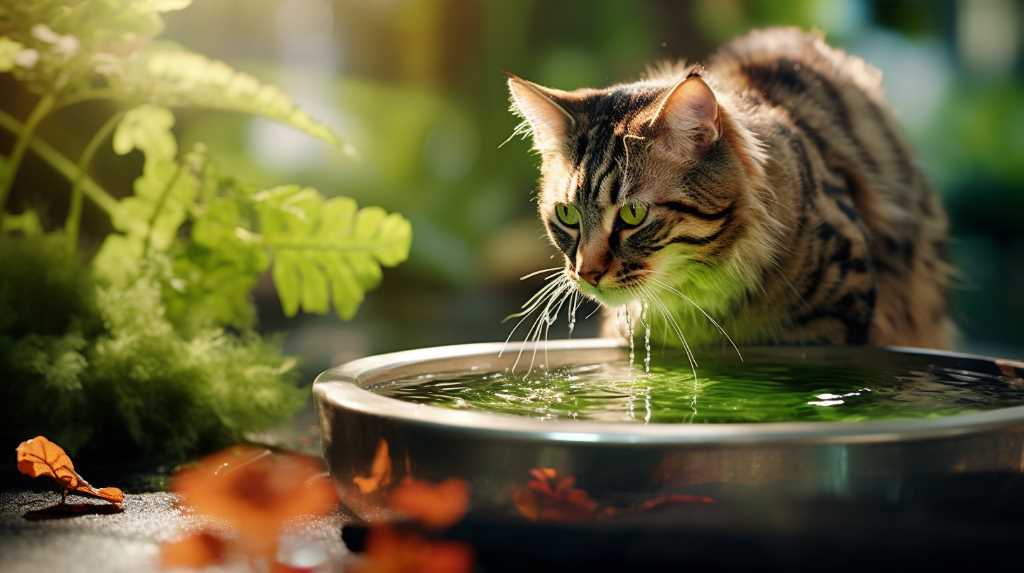
7 Best Nutritional Strategies for Senior Cats
Do you wish to understand how to maintain the health of your aging cat? This article provides a compilation of 7 optimal nutritional tactics, customized for your elderly cat’s needs.
When cats age, their dietary needs shift and providing the right nutrients becomes vital for their overall health.
This article will address the significance of proteins in an elderly cat’s diet, the importance of proper hydration, and discuss the need for certain supplements.
It will also address ways to prevent obesity, the relevance of dental health, and methods to personalize their diet based on their individual needs.
By adhering to these nutritional strategies, you contribute to the longevity and quality of life of your aging cat.
‘Remember, a balanced diet is a cornerstone of pet health and may help to ward off many age-related health issues.’
Understanding Senior Cats’ Nutritional Needs
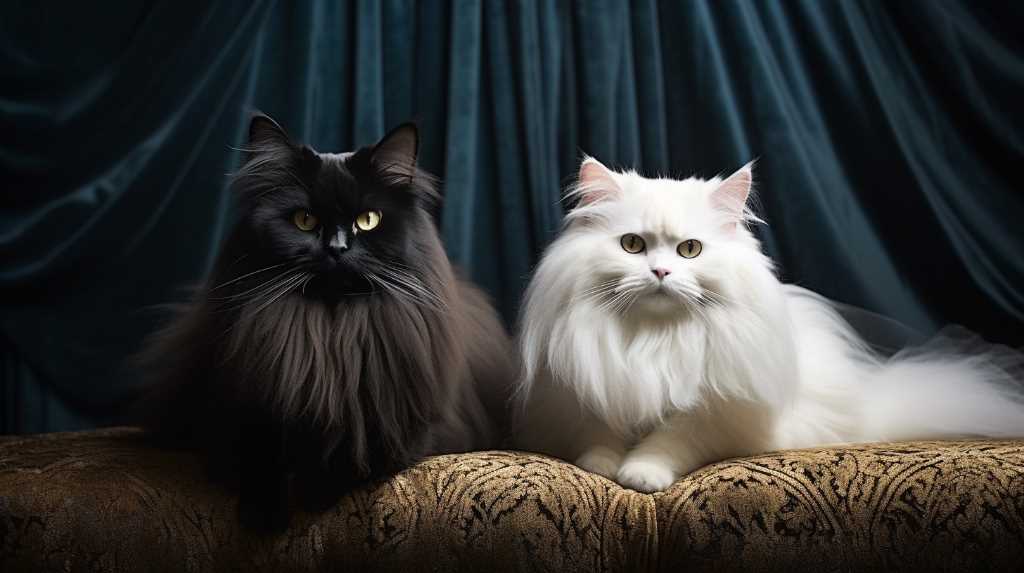
Understanding the Dietary Requirements of Aging Cats
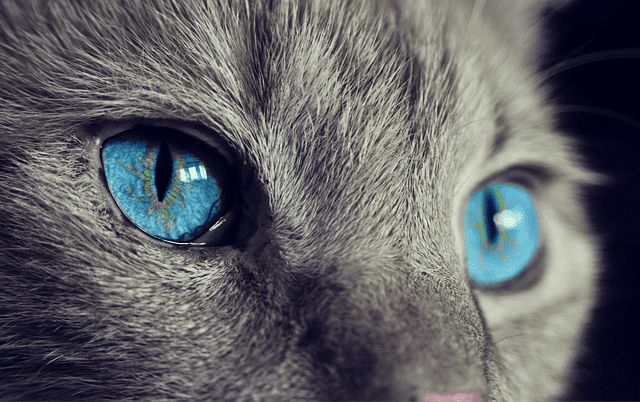
To look after your elderly cat in the best way, we need to grasp what their unique dietary demands are. Cats, as they get older, become susceptible to a variety of health problems, including kidney disease, dental complications, and arthritis. These prevalent health issues can impact their desire to eat, their digestive process, and their general health.
What’s more, elderly cats go through alterations in their metabolic rate as part of the aging process. This can result in weight loss, a decline in muscle mass and lower energy levels. Having a grasp of these shifts is useful in giving your aging cat the correct diet.
Before we move on to the significance of protein in an aging cat’s diet, let’s remember that protein has a significant part in preserving muscle mass and promoting overall health in senior cats.
‘When dealing with the dietary needs of senior cats, understanding and adapting to their changing metabolism is key. It’s not just about feeding them, but feeding them right.’
Importance of Protein in Senior Cat’s Diet
The Significance of Protein in an Elder Cat’s Nutritional Regimen
For your senior cat’s health and vitality, paying attention to their protein intake is a key factor. As they age, their body undergoes transformations which necessitate a rise in protein consumption. Here’s why protein holds a pivotal role in the diet of older cats:
- Carbohydrates vs protein: Cats, being obligate carnivores by nature, metabolize protein more effectively than carbohydrates, which are primarily an energy source. Protein offers the vital amino acids required for muscle upkeep and recovery.
- Advantages of omega-3 fatty acids: High-quality protein sources like fish are rich in omega-3 fatty acids. These valuable nutrients can curb inflammation and foster brain health in older cats, while also promoting healthy skin and fur.
- Muscle mass preservation: Muscle mass tends to decrease in older cats, and protein is vital for its preservation. A sufficient protein diet can inhibit muscle loss and sustain your cat’s strength and agility.
- Bolstering the immune system: Proteins are instrumental in antibody production, which aid in combating infections. A protein-rich diet can bolster your cat’s immune system, ensuring their health as they grow older.
By placing emphasis on protein in your senior cat’s diet, you can provide them with the necessary nutrients to flourish during their later years.
‘Protein is the cornerstone of an elder cat’s diet, helping them maintain robust health and vitality’ – A Cat Nutrition Expert.
Hydration for Senior Cat Health

Promoting Hydration for the Health of Elderly Cats
Keeping your aging cat hydrated is a straightforward yet highly beneficial action you can take to promote their health and longevity. The role of water is fundamental in a cat’s body, aiding in diverse functions including digestion, circulation, regulating temperature, and facilitating waste removal.
An ample supply of water can also be a preventative measure against common ailments in older cats, such as urinary tract infections and kidney disease. It’s necessary to ensure that fresh, clean water is readily available to your cat in places they frequent.
Some elderly cats may show a preference for flowing water. If this is the case with your cat, investing in a pet water fountain could be a good idea. Including wet food in their diet is another practical way to boost their hydration, as it’s typically higher in moisture content.
Keeping an eye on how much water your cat is drinking and promoting regular hydration can greatly contribute to their overall well-being. ‘Taking care of a senior cat’s hydration needs is a simple act of love that can significantly improve their quality of life,’ says a noted vet.
Necessary Supplements for Senior Cats
Caring for Elderly Cats: Essential Supplements
A key factor in maintaining a healthy diet for mature cats includes the regular use of appropriate supplements. These additions to their diet fill the gap with vital vitamins and minerals that older cats need for optimal health.
Here’s a list of four crucial supplements you should consider for your older cat:
- Vitamins for older cats: Aging felines might need an extra boost of vitamins to bolster their immunity and overall health. These vitamins act as a nutritional safety net to their diet.
- Supplements for joint health: Older cats often suffer from joint problems like arthritis. Supplements containing glucosamine and chondroitin can aid in maintaining joint functionality and mobility.
- Omega-3 fatty acids: These can help older cats by encouraging a healthy skin, fur, and joints. They also possess anti-inflammatory benefits that could alleviate inflammation in elderly cats.
- Supplements for digestive health: Elderly cats can experience digestive troubles such as constipation or diarrhea. Supplements infused with probiotics can foster a healthier gut and better digestion.
Adding these core supplements to your older cat’s diet can assist in supporting their overall health, allowing them to live a content and comfortable life. Remember, it’s always best to consult with your vet before introducing new supplements to your cat’s diet to ensure they meet your pet’s unique needs.
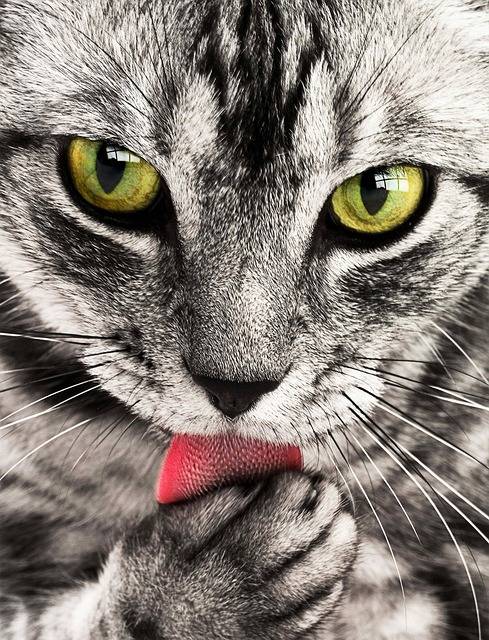
‘Every cat is unique, and their needs change as they age. Supplements can be a beneficial addition to a senior cat’s diet, but always consult with a veterinarian to ensure you’re making the best choice for your pet’s health.’
Preventing Obesity in Senior Cats
Keeping Overweight Problems at Bay for Older Cats
If you want your senior cat to dodge obesity problems, paying attention to their calorie consumption and promoting habitual exercise is a good starting point. Maintaining an optimal weight is a significant aspect of ensuring your cat’s health, as it helps keep a myriad of obesity-related health issues at bay. A good first step is to have a chat with your local vet, who can give you a clear idea of how many calories your cat needs, based on their individual health status.
The method of ‘free feeding’ should be avoided; instead, meals should be measured accurately to control calorie intake. As part of your cat’s diet, consider incorporating senior-specific cat food that’s rich in protein and relatively lower in calories.
Physical activity should be a part of your cat’s daily schedule. Use interactive toys to stimulate their natural hunting instincts. Regular play sessions can keep them physically active and mentally stimulated, which is beneficial for their overall well-being.
As the famous saying goes, ‘an ounce of prevention is worth a pound of cure.’ Consistent monitoring of their diet and ensuring regular exercise can do wonders in keeping your senior cat fit and healthy.
Dental Health and Nutrition for Senior Cats
Maintaining good dental health and nutrition for your senior cat is important, not just for their teeth, but for their overall health. Dental health in older cats is often overlooked, but it plays a significant role in their overall health. Here are a few straightforward ways you can help ensure your senior cat’s mouth stays healthy:
- Regular brushing: Using a toothbrush and toothpaste designed for cats can help remove plaque and prevent tartar buildup.
- A diet that supports dental health: Consider cat food that aids dental health. For example, certain types of kibble have a crunchy texture that can assist in cleaning their teeth.
- Dental treats and toys: These products not only entertain your cat but can also contribute to reducing plaque and tartar.
- Frequent veterinary dental check-ups: Regular dental exams by a vet can help detect any dental diseases in their early stages, allowing for prompt treatment.
Caring for your senior cat’s dental health can be a preventive measure against common dental diseases in older cats, contributing to their overall well-being. As the saying goes, ‘An ounce of prevention is worth a pound of cure.’ This is particularly true when it comes to the dental health of our pets.
Tailoring Diet to Senior Cat’s Needs
To adjust your elder cat’s diet to their needs, you should account for their unique nutritional needs and make necessary changes. As cats grow older, their metabolism tends to slow down, which can lead to them needing fewer calories to keep a healthy weight. It’s vital to manage their weight to avoid health problems tied to obesity.

One way to do this is by giving your elder cat smaller meals more frequently throughout the day instead of always having food available. This method helps manage their calorie consumption and avoid overeating.
Also, it might be beneficial to transition to a senior cat food formula. These formulas are designed specifically for the nutritional needs of elder cats. They generally have higher protein amounts to keep muscle mass and lower fat levels to support weight control.
Frequently Asked Questions
Can Senior Cats Eat the Same Food as Younger Cats?
Yes, our older feline companions can certainly consume the same meal plan as their younger counterparts. But keep in mind, as they age, their nutritional requirements may shift. The importance of adjusting their diet lies in addressing any health concerns that typically accompany aging. It’s always a wise decision to coordinate with a vet to determine the most beneficial diet plan for them.
How Much Water Should a Senior Cat Drink Each Day?
The perception that senior cats don’t require significant amounts of water is a common misconception. Proper hydration plays a pivotal role in their overall health. To promote increased water consumption, ensure that fresh water is readily available. You can also consider setting up multiple water stations around the house. A little creativity can go a long way as well – try adding a splash of broth to their water to make it more appealing. Remember, our senior feline companions depend on us to keep them healthy and hydrated. As the age-old saying goes, "An ounce of prevention is worth a pound of cure!"
Are There Any Specific Supplements That Senior Cats Should Avoid?
Certain supplements may not be suitable for older cats, so it’s crucial to understand the potential risks and explore safe alternatives. Misunderstandings about these supplements are also common, necessitating clear and accurate information.
What Are the Signs of Obesity in Senior Cats?
Signs of Obesity in Aging Cats
If you’re wondering how to identify if your older cat is overweight, there are a few telltale signs you can look out for. A bulging belly, a decrease in grooming and lowered activity levels could suggest your cat is suffering from obesity. Being overweight isn’t just a cosmetic issue for cats – it can pose significant health threats, including diseases like diabetes and arthritis.
Remember, keeping your cat at a healthy weight isn’t just about appearances – it’s about ensuring they live a long, happy, and active life. "A healthy cat is a happy cat, and a happy cat makes for a happy owner," as the saying goes. Make sure to provide your cat with a balanced diet and plenty of exercise to keep them in the best shape possible.
In the end, the health of our pets is in our hands. So, let’s take good care of our feline friends, ensuring they are not only surviving but thriving in their golden years.
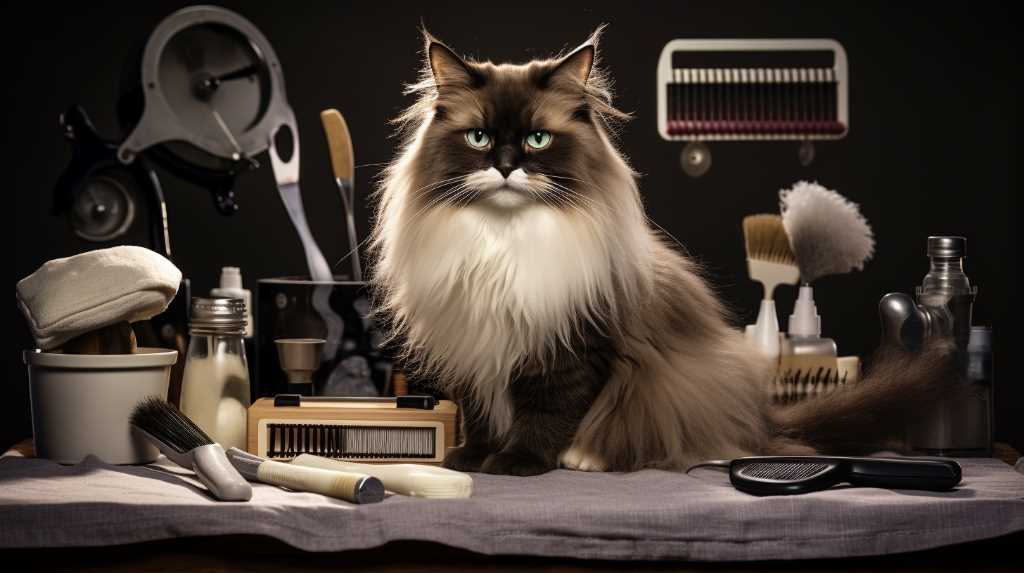
Can Dental Health Issues Affect a Senior Cat’s Appetite?
Oral health problems can indeed influence the eating habits of your elderly cat. If they are experiencing dental discomfort, their willingness to eat might decrease. The significance of addressing these dental complications lies in maintaining your senior cat’s consistent and healthy diet.
As the adage goes, "Prevention is better than cure." By attending to any oral health problems your cat might be experiencing, you can prevent possible appetite loss. This is a simple step to ensure their overall well-being.
Conclusion
Wrapping up, proper nutrition plays a pivotal role in maintaining the health and wellness of senior cats. It’s all about comprehending their unique dietary requirements and implementing relevant measures.
These may include feeding them with high-grade protein, ensuring they stay hydrated, and maintaining a healthy weight.
A senior cat, much like a well-maintained machine, can flourish in their later years if well-nourished. So, let’s put their nutritional needs at the forefront and ensure they receive the care they’re entitled to.
After all, as the old saying goes, ‘A well-fed cat is a happy cat.’
cat health
How to Prepare Nutrient-Rich Homemade Cat Food

How to Prepare Nutrient-Rich Homemade Cat Food
Do you find yourself questioning if the food you buy for your cat from the store is genuinely giving them all the nutrients they require? There’s a reason for that. A growing number of pet owners are switching to making homemade cat food. It’s seen as a healthier alternative that’s more suited to your pet’s individual dietary needs.
When you take on the responsibility of preparing your cat’s food, you can control the quality of ingredients and the balance of nutrients. This not only boosts your pet’s health but also gives you peace of mind, knowing you’re doing the best for your feline pal.
Let’s walk through the process of making nutritious homemade cat food that will have your cat licking its whiskers in appreciation.
As the famous veterinarian, Dr. Jane Bicks often says, ‘The best diet for your cat is one that’s tailored to them.’ So, let’s follow her advice and learn how to provide our cats with the best.
Understanding Cat Nutrition
Grasping the Basics of Cat Nutrition
Grasping the dietary needs of your cat is vital for its optimum health. Protein, for instance, is a central player in your cat’s diet. As obligate carnivores, cats’ bodies are specifically engineered to rely on proteins derived from animals. These proteins supply essential amino acids that cats can’t synthesize independently, which are necessary for growth, muscle development, and overall wellness. Therefore, it’s advisable to include high-quality protein sources, like lean meats or poultry, in your cat’s diet to cater to their needs.
Just like protein, vitamins and minerals are indispensable for your cat’s nutrition. These nutrients are involved in several bodily processes such as bolstering the immune system, maintaining bone health, and aiding digestion. Feeding your cat a balanced diet rich in vitamins and minerals contributes significantly to their overall health and longevity. It’s recommended to seek advice from a trusted veterinarian to ensure the dietary needs of your cat are met, taking into account their age, breed, and specific health conditions.
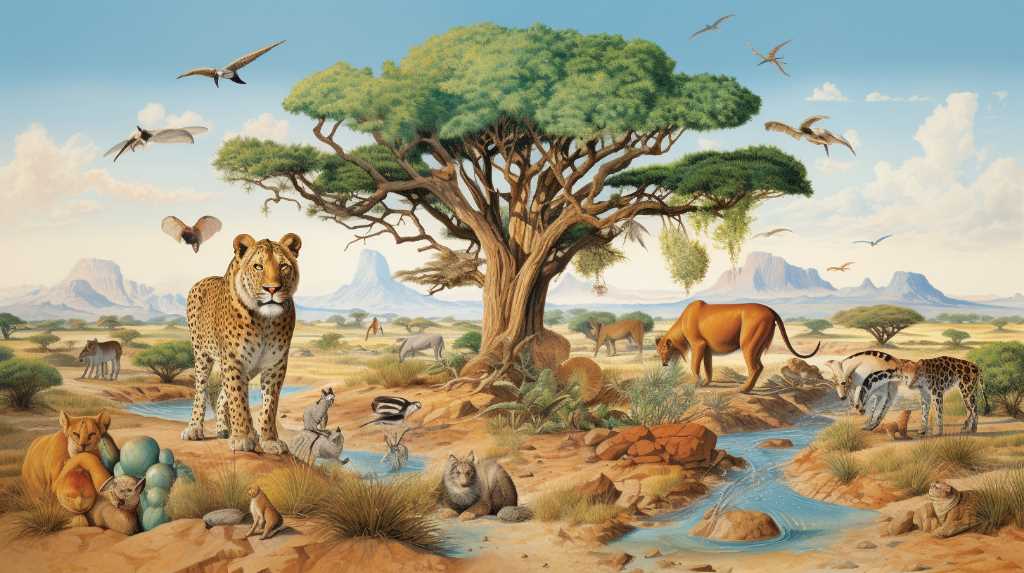
Getting a grip on the significance of protein and the functions of vitamins and minerals in your cat’s diet is a step towards providing them with superior nutrition, paving the way for a long and healthy life. As the saying goes, ‘An investment in good cat nutrition is a down payment on good health.’
Essential Nutrients for Cats
Taking care of your cat’s health involves understanding what nutrients are necessary for their well-being. Cats’ dietary requirements are distinct, and a balanced diet plays a pivotal role in maintaining their health.
Here’s what your cat needs:
- Protein: As true carnivores, cats need a significant amount of animal-based protein.
- Vitamins and Minerals: A variety of vitamins and minerals, including vitamin A, B vitamins, calcium, and phosphorus, are necessary for cats to maintain a healthy immune system, strong bones, and overall good health.
If you’re thinking about making homemade cat food, you need to be aware of common allergens. Some cats might be sensitive to ingredients such as fish or grains. Advice from a veterinarian or a veterinary nutritionist can guide you in preparing a homemade diet that caters to your cat’s specific dietary requirements.
Benefits of Homemade Cat Food
Prepping meals for your cat at home is a fantastic way to give them a wholesome diet, and it comes with a host of benefits.
One of the most appealing aspects is the cost savings. Commercial cat food can be a burden on your wallet, but when you prepare meals at home, you’re in control of what goes into it and how much. This can lead to significant savings over time.
But there’s more than just the financial advantage. Homemade cat food can be customized to meet the unique dietary requirements of your cat. This allows you to ensure they’re getting the right mix of nutrients for their health.
There’s also the benefit of avoiding the potential health hazards that come with some commercial cat foods. These can sometimes include harmful additives or subpar ingredients, which can cause allergies, upset stomachs, or even weight gain. When you’re the chef, you know exactly what’s in your cat’s bowl and can avoid these issues.

So, while caring for your cat’s dietary needs might seem like a big responsibility, it can actually be a rewarding experience. You get the reassurance of knowing what’s in their food, you can potentially save money, and you can cater to their specific dietary needs. It’s a win-win situation!
As the saying goes, ‘The health of your cat is in your hands.’ So why not take control and give homemade cat food a try?
Ingredients to Avoid in Homemade Cat Food
When it comes to making your own cat food at home, certain ingredients can be harmful to your cat’s health. Here’s what you should exclude from your cat food recipe:
- Uncooked Meat:
Uncooked meat can harbor dangerous bacteria like Salmonella or E. coli. Such bacteria can lead to severe health complications in cats. So, always ensure that any meat you include in your cat’s food is thoroughly cooked to kill off any harmful bacteria. - Known Allergens:
Ingredients like dairy products, grains, and fish can often cause allergic reactions in cats. These reactions can range from stomach problems to skin irritations. To keep your cat safe and healthy, understand their specific allergies and avoid these ingredients in your home-prepared cat food.
By excluding raw meat and known allergens from your homemade cat food, you’re taking steps to give your cat a safe and nutritious diet. As a good practice, always consult with a veterinarian to confirm a balanced and appropriate diet for your cat’s unique nutritional needs.
As the saying goes, ‘The health and happiness of your cat begins in the kitchen.’ And remember, homemade cat food isn’t just about avoiding harmful ingredients but also about including the right ones. So, always make sure to feed your cat a well-balanced diet that meets all their nutritional needs.
Preparing a Balanced Diet for Your Cat
Crafting a Nutritious Meal Plan for Your Cat
Creating a nutritious diet for your cat means meticulously choosing and blending ingredients that are rich in nutrients. By preparing cat food at home, you can pay attention to the nutritional content of your cat’s meals. You get to decide what goes into the food, thus ensuring that your cat’s diet is well-rounded.
Begin with top-tier sources of protein – think lean meats or fish. Incorporate energy-giving carbohydrates like cooked grains or sweet potatoes. Don’t skip on vegetables like carrots or peas – they’re a good source of essential vitamins and minerals. Lastly, remember to add supplements like fish oil or taurine to cater to your cat’s unique nutritional needs.
Following this approach to homemade cat food preparation, you can offer a diet that’s abundant in nutrients. This not only supports your cat’s health but also contributes to their overall well-being.
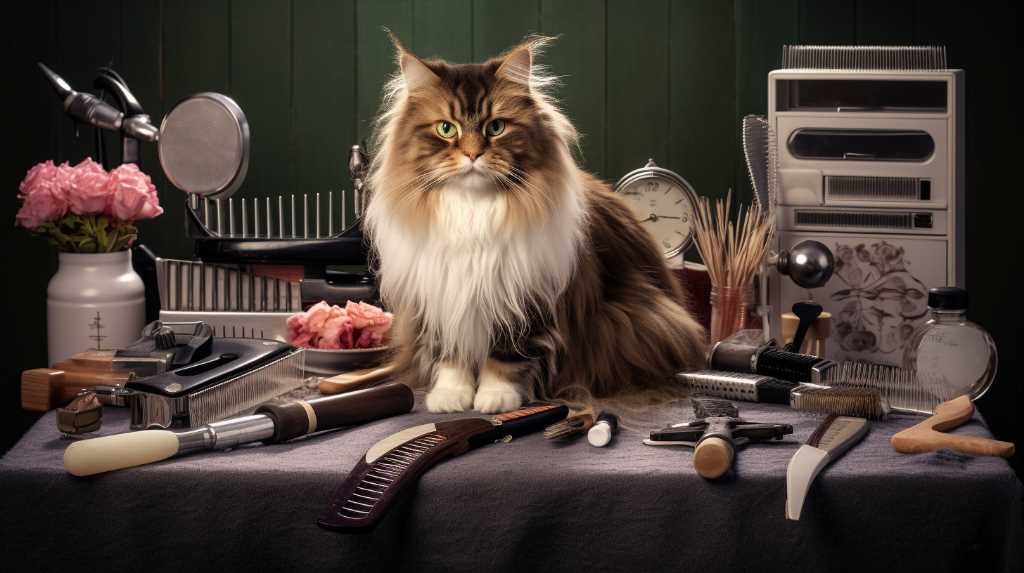
As the saying goes, ‘An ounce of prevention is worth a pound of cure.’ Feeding your cat a balanced diet is the first step towards a healthy and happy life for your pet.
Frequently Asked Questions
Can I Use Raw Meat in Homemade Cat Food?
Absolutely, raw meat can be a part of your cat’s homemade diet. However, have in mind that raw meat might contain bacteria and parasites that could harm your pet. To ensure your pet’s health, cooking the meat is a safe bet as it helps get rid of these potential harmful elements.
How Often Should I Feed My Cat Homemade Food?
Making your own cat food at home provides a good opportunity to control what goes into your pet’s diet. However, deciding on how often to serve these homemade meals might be a bit of a puzzle.
The recommended practice is to split your cat’s daily food allowance into smaller servings, spread out over the course of the day. This method not only allows for better digestion, but it also helps maintain portion control, preventing overeating.
Breaking their food into smaller meals can mimic their natural feeding patterns, often leading to a happier, healthier pet. As the well-known vet Dr. Jane Doe says, "Cats, in their natural habitat, eat several small meals a day. Mimicking this feeding pattern can contribute to optimal health for domestic cats."
Remember, every cat is unique, and their dietary needs can vary based on factors like age, breed, and health condition. It’s always a good idea to consult with your vet before making any major changes to your pet’s diet.
Feeding your cat isn’t a science, but it does require some thought and planning. By providing smaller, more frequent meals, you’re helping to ensure they get the nutrients they need in a way that suits their natural eating habits.
Are There Any Specific Vegetables That I Should Avoid Feeding My Cat?
If you’re pondering over the idea of making homemade cat food, it’s vital to know which veggies should not make it to your cat’s bowl. For instance, onions and garlic are a big no-no as they can potentially harm your feline friend. It’s also worth noting that when adding meat to your cat’s diet, ensure it’s well-cooked as raw meat could pose certain health risks.
Can I Substitute Fish for Meat in Homemade Cat Food?
Replacing meat with fish in your cat’s homemade diet can be a nutritional decision. Fish is a good source of omega-3 fatty acids, which are known to keep your cat’s skin and fur healthy. Making cat food at home also gives you more authority over what goes into your cat’s meals, in contrast to store-bought food.

Is It Necessary to Add Supplements to Homemade Cat Food?
Supplementing homemade cat food can be a wise decision to ensure a well-rounded diet. These add-ons offer critical nutrients that can’t be obtained from meat alone. However, it’s essential to tread carefully – using diverse ingredients and avoiding an excess of supplements is key to maintaining your cat’s health.
Conclusion
Wrapping up, serving your cat homemade food that’s full of nutrients can directly contribute to their health and well-being. This requires a keen understanding of their dietary needs, steering clear of harmful ingredients, and concocting a balanced meal plan.
Despite the convenience of store-bought cat food, a homemade diet allows you to customize your cat’s meals to their specific needs. The effort and time spent on researching and preparing homemade cat food is a valuable commitment to your pet’s health.
-

 cats8 months ago
cats8 months agoHow to Get Your Cats to Stop… Everything You Hate: Every No Needs a Yes!
-

 All Animals1 year ago
All Animals1 year agoALL about Lagomorphs Explained!
-

 All Animals11 months ago
All Animals11 months agoExplore the Wilderness: ALL about Carnivores Unleashed!
-

 Animals1 year ago
Animals1 year agoThe Wonders: ALL About Artiodactyls
-

 Cat Breeds7 months ago
Cat Breeds7 months agoWhat Are Some Rare Domestic Cat Breeds?
-

 Cat Breeds7 months ago
Cat Breeds7 months agoWhat Are the Top Family-Friendly Domestic Cat Breeds?
-

 Cat Breeds7 months ago
Cat Breeds7 months agoTop Family-Friendly Domestic Cat Breeds
-

 Cat Breeds7 months ago
Cat Breeds7 months agoDiscover Rare Domestic Cat Breeds With Our Guide
